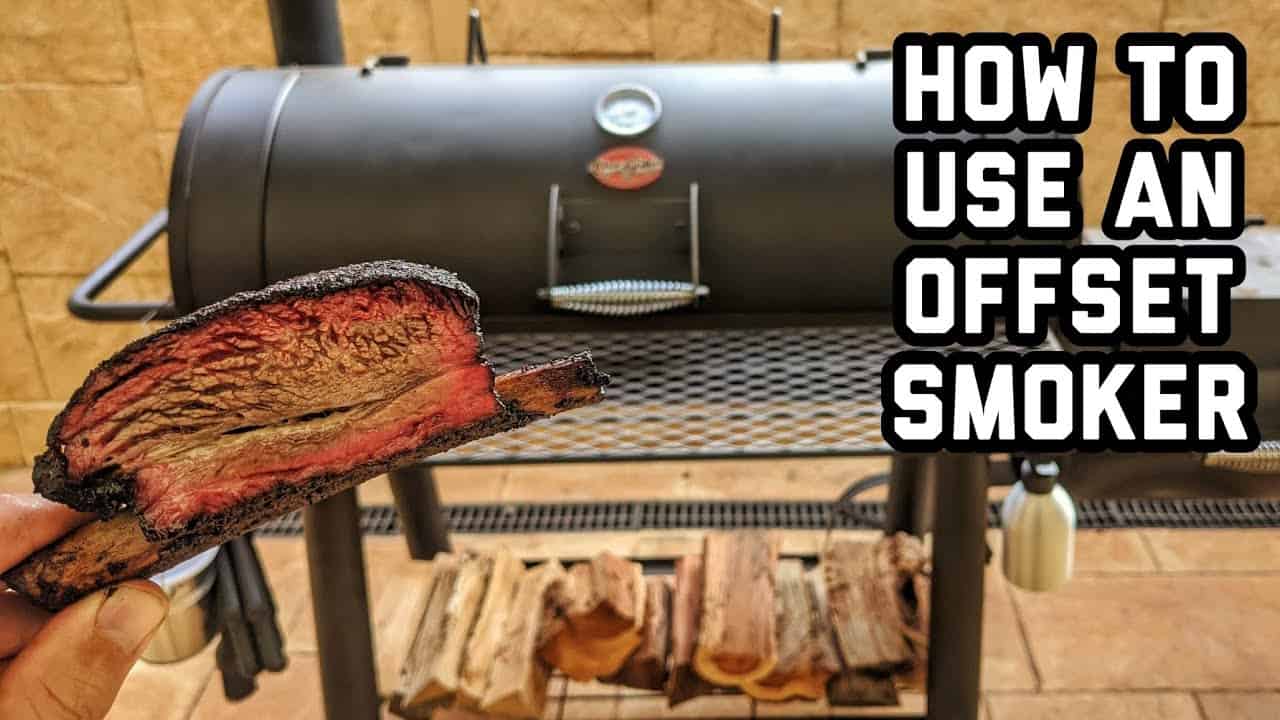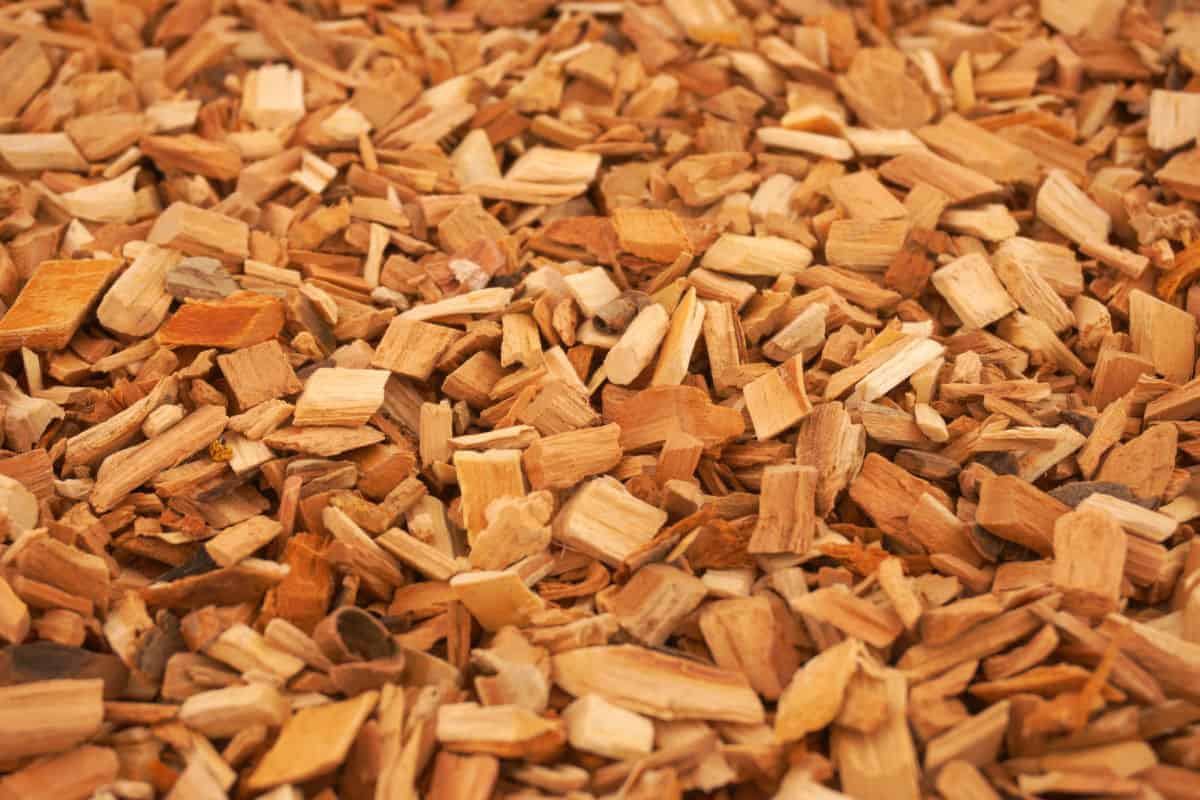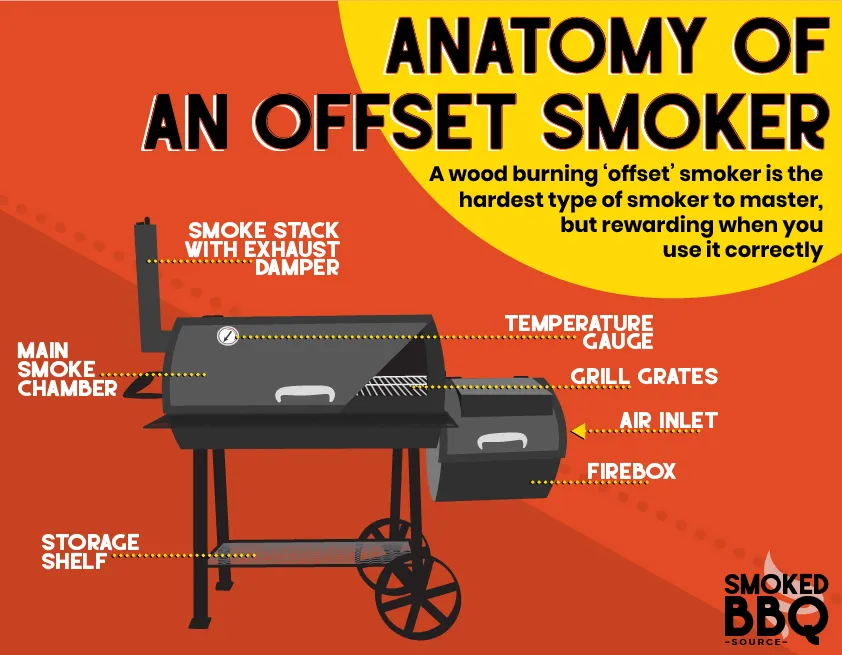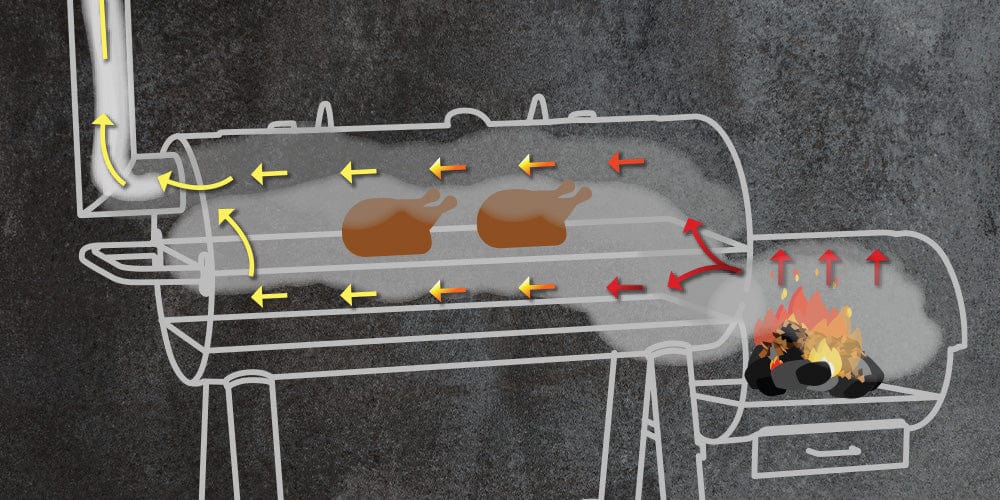To use an offset smoker, start a fire in the firebox with charcoal and wood, maintain a consistent temperature by adjusting the vents, place your food in the main cooking chamber, and monitor the heat and smoke levels throughout the cooking process.
Smoke Like a Pro: Tips and Tricks for Using an Offset Smoker
Offset smokers, also known as barrel smokers or horizontal smokers, are a type of smoker that allows for indirect cooking and smoking of meat. They consist of a main cooking chamber, where the meat is placed, and a separate firebox attached to the side. The firebox is used to generate heat and smoke, which then travels into the cooking chamber, giving the meat its smoky flavor.
There are several advantages to using offset smokers. Firstly, they provide a large cooking surface area, allowing you to smoke large quantities of meat at once. This makes them ideal for backyard barbecues and gatherings. Additionally, the indirect cooking method used in offset smokers helps to retain the moisture in the meat, resulting in tender and juicy results. The slow and steady cooking process also allows for the flavors to develop fully, resulting in a rich and smoky taste.
The history of offset smokers can be traced back to traditional smokehouses used by early settlers in America. These smokehouses were typically made from wood or brick and used a similar offset design to cook and smoke meat. Over time, the design evolved and became more efficient, leading to the development of the offset smokers we know today.
Choosing the Right Offset Smoker: Factors to Consider Before Buying
When choosing an offset smoker, there are several factors to consider. Firstly, you need to determine the size and capacity that will best suit your needs. If you plan on smoking large quantities of meat or hosting large gatherings, you will need a larger smoker with a bigger cooking surface area. On the other hand, if you only plan on smoking for your family or small groups, a smaller smoker will suffice.
The material and construction of the smoker is also important. Look for smokers made from thick steel or cast iron, as these materials retain heat better and provide more even cooking temperatures. Avoid thin and flimsy materials, as they may not hold up well over time and can result in uneven cooking.
Price range is another important consideration. Offset smokers can range in price from a few hundred dollars to several thousand dollars. Set a budget and look for smokers within that range. Keep in mind that while more expensive smokers may offer additional features and better construction, there are also many affordable options that can still produce excellent results.
Lastly, consider the brand reputation and customer reviews. Look for reputable brands that have been in the market for a while and have positive customer feedback. Read reviews from other users to get an idea of the performance and durability of the smoker you are considering.
Preparing Your Offset Smoker: Cleaning and Seasoning the Grill
Before using your offset smoker for the first time, it is important to clean and season it properly. Start by cleaning the grill grates and interior of the smoker. Use a wire brush to remove any debris or residue from the grates, and then wipe down the interior with a damp cloth or sponge. Avoid using harsh chemicals or abrasive cleaners, as they can damage the smoker.
Once the smoker is clean, it is time to season it. Seasoning involves coating the interior surfaces with oil to prevent rust and improve flavor. Start by applying a thin layer of cooking oil, such as vegetable or canola oil, to all the interior surfaces, including the grates and walls. Use a cloth or brush to spread the oil evenly.
Next, start a small fire in the firebox and let it burn for about an hour. This will help to further season the smoker and remove any remaining impurities. During this process, you may notice some smoke or odors, which is normal.
After seasoning, it is important to maintain your smoker properly to ensure its longevity. Clean the grates after each use to prevent buildup of grease and residue. Store your smoker in a dry and covered area to protect it from the elements. Regularly inspect and clean the firebox and chimney to ensure proper airflow.
Selecting the Right Wood: Types of Wood for Smoking Meat
The type of wood you use for smoking can greatly impact the flavor of your meat. There are several different types of wood to choose from, each with its own unique flavor profile. Some common types of wood used for smoking include hickory, mesquite, apple, cherry, and oak.
Hickory is one of the most popular woods for smoking, as it provides a strong and smoky flavor that pairs well with a variety of meats. Mesquite, on the other hand, has a stronger and more intense flavor that is best suited for beef and game meats. Apple and cherry woods provide a sweeter and milder flavor that works well with poultry and pork. Oak is a versatile wood that provides a medium smoky flavor that pairs well with all types of meat.
When selecting wood for smoking, it is important to choose high-quality wood that is free from chemicals or additives. Avoid using wood that has been treated or painted, as this can release harmful fumes when burned. It is also important to properly store your wood to prevent it from becoming damp or moldy. Store your wood in a dry and well-ventilated area, away from moisture and pests.
Preparing the Meat: Seasoning, Brining, and Marinating
Before smoking your meat, it is important to properly prepare it to enhance its flavor and tenderness. There are several different methods you can use to season your meat, including dry rubs, wet marinades, and brines.
Dry rubs are a mixture of herbs, spices, and seasonings that are applied directly to the surface of the meat. They help to add flavor and create a crust on the outside of the meat. Common ingredients used in dry rubs include salt, pepper, paprika, garlic powder, and onion powder. Experiment with different combinations of spices to create your own unique flavor profile.
Wet marinades are a mixture of liquids, such as oil, vinegar, and citrus juice, along with herbs, spices, and seasonings. The meat is soaked in the marinade for several hours or overnight to infuse it with flavor and tenderize it. Marinades are particularly effective for tougher cuts of meat, such as brisket or pork shoulder.
Brining involves soaking the meat in a solution of salt and water for several hours or overnight. This helps to add moisture and flavor to the meat, resulting in a juicier and more flavorful end product. Brining is particularly effective for poultry, as it helps to prevent the meat from drying out during the smoking process.
When preparing your meat for smoking, it is important to trim off any excess fat or connective tissue. This will help to prevent flare-ups and ensure even cooking. Allow the meat to come to room temperature before placing it in the smoker, as this will help it cook more evenly.
Lighting the Fire: Tips for Starting and Maintaining Your Smoker
Before you can start smoking your meat, you need to light the fire in your smoker. There are several different fuel types you can use, including charcoal, wood chunks, or a combination of both.
To light charcoal, arrange a layer of charcoal briquettes in the firebox and use a chimney starter or lighter fluid to ignite them. Once the coals are hot and covered in ash, spread them out evenly in the firebox. Add wood chunks on top of the coals to generate smoke.
If you prefer to use wood chunks as your fuel source, start by arranging a layer of wood chunks in the firebox. Use a small amount of kindling or newspaper to start a small fire, and then add more wood chunks as needed to maintain a steady heat and smoke.
Maintaining a consistent heat and smoke is important for achieving the best results. To do this, you will need to periodically add more fuel to the firebox. Monitor the temperature inside the smoker using a thermometer, and adjust the airflow by opening or closing the vents and dampers as needed.
Managing the Temperature: Controlling Heat and Smoke for Perfect Results
Controlling the temperature inside your smoker is crucial for achieving the best results. There are several different methods you can use to control the heat and smoke, including adjusting the vents and dampers, using a water pan, and using a heat deflector.
The vents and dampers on your smoker allow you to control the airflow, which in turn affects the temperature. Opening the vents and dampers will increase the airflow and raise the temperature, while closing them will decrease the airflow and lower the temperature. Experiment with different settings to find the right balance for your desired cooking temperature.
Using a water pan can help to regulate the temperature and add moisture to the cooking chamber. Fill a shallow pan with water and place it in the cooking chamber next to the meat. The water will absorb heat from the firebox and release it slowly, helping to maintain a steady temperature. It will also help to keep the meat moist during the smoking process.
A heat deflector is a device that sits between the firebox and cooking chamber, helping to distribute heat evenly throughout the smoker. It can be made from a metal plate or ceramic material. The heat deflector helps to prevent hot spots and ensures that the meat cooks evenly.
Using a thermometer is essential for monitoring the temperature inside your smoker. Place a thermometer in the cooking chamber near the meat to get an accurate reading. This will help you make adjustments as needed to maintain a consistent temperature throughout the smoking process.
Adding Flavor: Using Smoke, Herbs, and Spices to Enhance Your Meat
In addition to the natural smoky flavor from the wood, you can also enhance the flavor of your meat by using herbs and spices. There are several different smoke flavors to choose from, each with its own unique characteristics.
Some common smoke flavors include mesquite, hickory, apple, cherry, and oak. Mesquite provides a strong and intense flavor that pairs well with beef and game meats. Hickory offers a rich and smoky flavor that works well with all types of meat. Apple and cherry woods provide a sweeter and milder flavor that complements poultry and pork. Oak is a versatile wood that provides a medium smoky flavor that pairs well with all types of meat.
In addition to smoke flavors, you can also use herbs and spices to enhance the flavor of your meat. Common herbs used in smoking include rosemary, thyme, oregano, and sage. Spices such as paprika, cumin, chili powder, and garlic powder can also add depth and complexity to your meat.
Experiment with different combinations of smoke flavors, herbs, and spices to create your own unique flavor profile. Keep in mind that a little goes a long way, so start with small amounts and adjust as needed.
Timing and Temperature: Cooking Times and Temperatures for Different Meats
Cooking times and temperatures can vary depending on the type of meat you are smoking. It is important to cook your meat to the proper internal temperature to ensure it is safe to eat. Here are some general guidelines for cooking times and temperatures for different meats:
– Beef Brisket: Cook at 225-250°F (107-121°C) for 1-1.5 hours per pound (0.45-0.68 kg) until the internal temperature reaches 195-205°F (90-96°C).
– Pork Shoulder: Cook at 225-250°F (107-121°C) for 1.5-2 hours per pound (0.68-0.91 kg) until the internal temperature reaches 195-205°F (90-96°C).
– Ribs: Cook at 225-250°F (107-121°C) for 3-4 hours until the internal temperature reaches 190-203°F (88-95°C).
– Chicken: Cook at 275-300°F (135-149°C) for 1.5-2 hours until the internal temperature reaches 165°F (74°C).
– Turkey: Cook at 275-300°F (135-149°C) for 12-15 minutes per pound (0.45 kg) until the internal temperature reaches 165°F (74°C).
It is important to note that these are general guidelines and cooking times may vary depending on the size and thickness of the meat. Always use a meat thermometer to ensure your meat is cooked to the proper internal temperature.
Resting and Serving: Letting Your Meat Rest and Tips for Serving
After smoking your meat, it is important to let it rest before serving. This allows the juices to redistribute throughout the meat, resulting in a more tender and flavorful end product. Letting your meat rest also makes it easier to carve and ensures that it retains its moisture.
To let your meat rest, remove it from the smoker and place it on a cutting board or platter. Tent it loosely with aluminum foil to keep it warm, and let it rest for about 15-30 minutes. This will give you enough time to prepare any sides or sauces.
When carving your meat, use a sharp knife and slice against the grain for maximum tenderness. For larger cuts of meat, such as brisket or pork shoulder, you may need to separate them into smaller portions before carving.
When serving your smoked meat, consider pairing it with complementary sides and drinks. Some popular side dishes for smoked meat include coleslaw, baked beans, cornbread, and potato salad. For drinks, consider serving ice-cold beer, lemonade, or iced tea.
Troubleshooting: Common Problems and How to Fix Them in Your Offset Smoker
While offset smokers can produce delicious results, they can also present some challenges. Here are some common problems you may encounter and how to fix them:
– Temperature Fluctuations: If you are experiencing temperature fluctuations, check the vents and dampers to ensure they are properly adjusted. Make sure there is enough fuel in the firebox and that it is burning evenly. Adjust the vents and dampers as needed to maintain a steady temperature.
– Uneven Cooking: If your meat is cooking unevenly, check for hot spots in the cooking chamber. Use a heat deflector or rearrange the meat to ensure even heat distribution. Rotate the meat periodically during the smoking process to ensure it cooks evenly.
– Excessive Smoke: If you are experiencing excessive smoke, check the airflow in the smoker. Make sure the vents and dampers are properly adjusted to allow for proper ventilation. Avoid using wet or green wood, as this can produce excessive smoke.
– Dry Meat: If your meat is turning out dry, it may be overcooked or cooked at too high of a temperature. Monitor the internal temperature of the meat using a thermometer and remove it from the smoker when it reaches the desired temperature. Consider using a meat probe thermometer to accurately monitor the temperature throughout the cooking process. Additionally, try using a water pan in the smoker to help maintain moisture and prevent the meat from drying out. Finally, consider marinating or brining the meat before smoking to add extra moisture and flavor.
Originally posted 2024-02-07 01:41:11.




